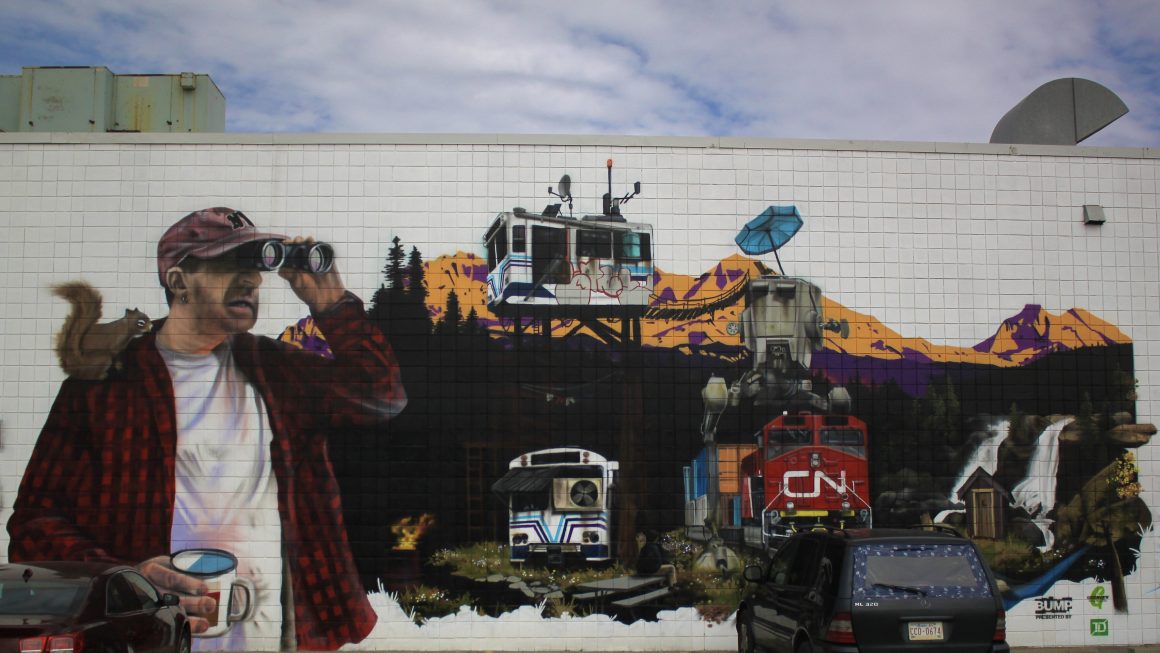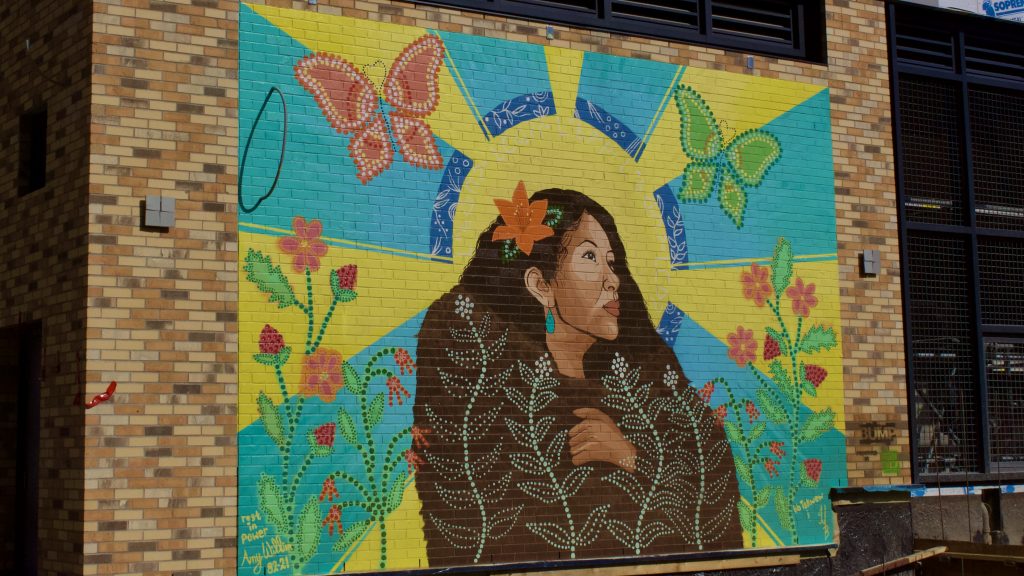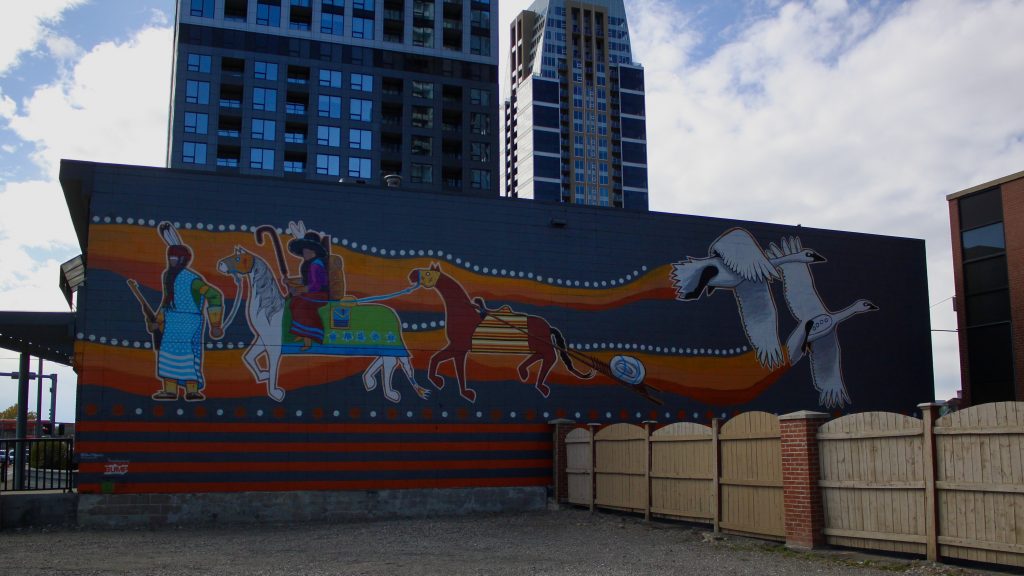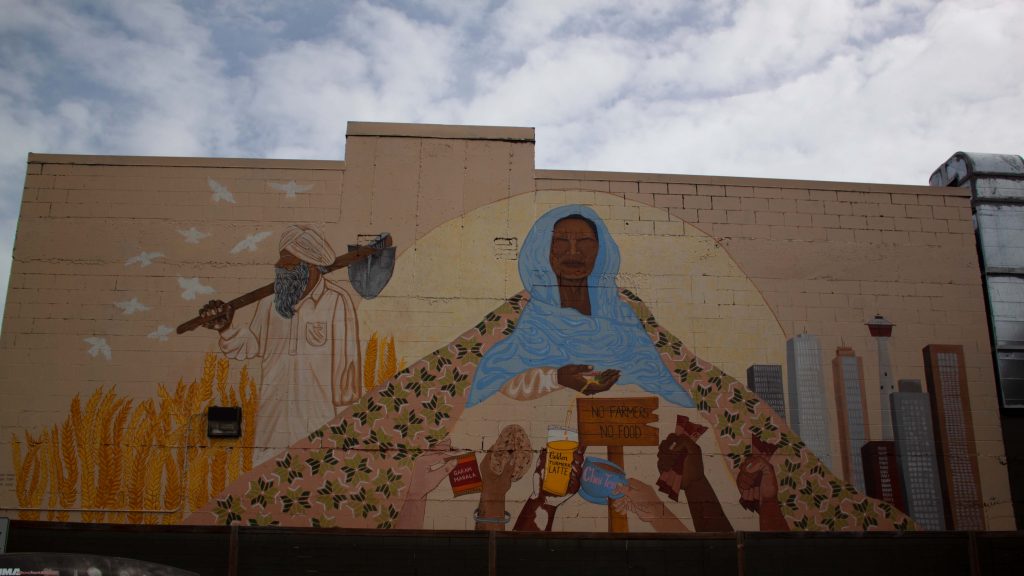
Beltline Urban Murals Project: Street art redefined and revitalized
By Rachneet Randhawa, September 29 2021—
The Beltline Urban Murals Project, also known as BUMP, is a community-driven initiative transforming the centre of Calgary into an expansive open-air art gallery that began in 2017. The project celebrates the diversity, talent and vibrant characters of the city through public works of art by showcasing a portfolio of engaging local, national and international mural artists to create works of art representing different styles, media, people and stories. The Gauntlet sat down with the President of the Beltline Neighborhoods Association, Peter Oliver, to learn more about BUMP.
Oliver explains that the origins of street art emerged in the 1970s and 1980s in the graffiti scene in New York which has morphed into muralism — a much broader practice outside of graffiti. Surprisingly, Oliver mentions that a lot of so-called graffiti writers would strongly be opposed to being labelled or identified as “street artists” or practicing street art. These days there is a greater distinction between generic street art, which now includes a broader array of visual artists and illustrators who also participate in creating murals.
Locally speaking, Oliver says that the graffiti scene mostly took off in the early 2000s which unfortunately took a rough beating with the city’s very stringent policies around graffiti removal and with businesses getting fined within a very short period if they didn’t remove the unauthorized public art. For instance, city crews were constantly removing graffiti on bridges and underpasses and it really became a damper on the community. Nonetheless, the medium still survived and is a lot more active nowadays in the city with BUMP being the change-maker for street art bringing it more into the mainstream.

BUMP officially launched a few years ago which started as a desire to bring more public art into the Beltline community which has a lot of really great walls, alleys and spaces which were otherwise unremarkable. At first, it started as a small project to try out some murals in the Beltline. From there it has expanded every year since to include a full festival which is now a month-long event in August and includes everything from self-guided mural tours to live music performances, outdoor cinemas and fun “bump ups” in which they mash together DJs alongside artists as they paint their murals on-site.
“So it’s a really wicked festival that I think is bringing a lot of life and vitality to the streets of this city,” says Oliver. “And I think [BUMP is] changing the perception of Calgary as a boring corporate downtown with nothing going on into a more vibrant space.”
This year they have brought in over 50 new murals to the city and have begun expanding beyond the Beltline to include several different neighbourhoods including the downtown core, Green View, Bridgeland, Marda Loop, Inglewood and Kensington.
“And there’s a whole conversation about the work we’re doing for the visual arts community here which hasn’t had as many opportunities in the past in public art, which has meant more artists either just don’t participate or just move to other cities where those opportunities are more abundant,” Oliver adds. “And so we’re helping grow that scene here and create more opportunities both through commissioning new works of art but also by bringing in artists from other cities to help transfer the skills and knowledge to this community.”
Oliver also believes that the city’s perception of murals is changing year by year.
“The public’s perception around murals, I think, is improving each year where more buildings are interested in participating in the festival or paying for their own private murals,” he says. “I think as the city warms up to the idea and seize the opportunity of public art to transform space and bring the art to the community and the conversations that the artists bring with it into the public.”

When asked how BUMP contributes to and supports local artists Oliver claims that it’s directly creating a lot more opportunities for artists that simply didn’t exist. One of the biggest opportunities BUMP offers is by paying fair compensation to the artists. Most festivals work on a promotion arrangement where only materials are covered and maybe a small honorarium.
“It’s sort of like a positive feedback loop where the more murals we create, the more public appetite and appreciation there is for these murals, and the more opportunities that creates for artists and an investment,” says Oliver. “And so I think that’s why we’ve seen so much growth from the festival over the last five years to where we are today as one of the largest mural festivals in North America.”
Moreover, some rising star artists we should keep an eye out for in the city are Nathan Meguinis, one of several Indigenous artists this year, and BirdO from Toronto whose art is occupying a ginormous wall downtown near Knox United Church. Another artist, CONZ, is a hearing-impaired artist who completed his mural in Greenview Industrial this year. He is self-taught and a graffiti writer who has chosen a mural theme of a post-apocalyptic landscape in the Rocky Mountains that has utilized repurposed C-train cars taken from the city.

BUMP is also becoming inclusive of BIPOC artists as each year the lineup is selected through a jury process. One of the main goals of BUMP is to advocate for a diversity of artists including background but also style and subject matter.
“We continue to build bridges out to underrepresented communities that we just haven’t had the participation from but I think that’s a process that we are working on to build those bridges and connections and trust,” Oliver says.
Oliver references BUMP’s first Punjabi mural completed by a trio of artists titled Still I Rise in reference to the farmer’s protests in India.
“I think [the mural] turned out extremely well and was super positively received in the community.”
The beauty of street art is truly in the eye of the beholder, and better yet it’s a powerhouse influencer as art for political change as it forces at times controversial subject matter into the public domain.
“We leave it up to artists really, to use these murals as their artistic freedom to pursue the subjects and the work that they want to do,” says Oliver. “So we don’t direct them and we encourage building owners to allow for that artistic freedom to happen.”
Over time, as dialogue is fostered in the community, trust will be built with building owners to establish a larger body of murals and allow artists to be flexible and do their own thing. This is evident with artist John F. Ross who painted a polar bear in an urban downtown setting bringing the conversation of climate change into the public realm.
“Calgary has traditionally been a very quiet city when it comes to talking about politics,” says Oliver. “It’s kind of been taboo for a long time, but I think more and more that’s changing. And this is sort of a reflection of that.”
The Beltline Urban Murals Project (BUMP) festival event ran from Aug. 2 to Aug. 29. However, the murals are publicly available to view at any time. We definitely recommended checking out their mural map and doing a self-guided tour as a fun, educational and engaging pastime activity.
